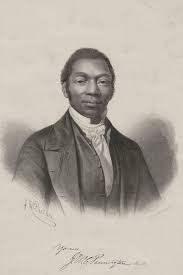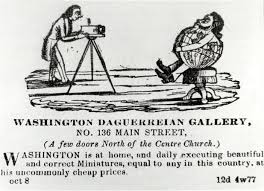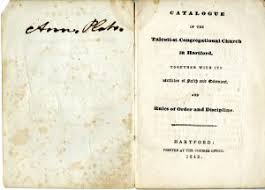Before 1819, despite Christianity’s promise of spiritual refuge from external injustice, Black church-goers in Hartford were relegated to separate pews at the back of the nave and in the gallery. In response to this injustice, a group of congregants petitioned to form their own autonomous congregation which would later be called the African American Religious Society, and is considered Connecticut’s first Black Congregational Church.
Initially, the congregation operated out of a conference room in the historical First Church of Christ (now Center Church), then in a separate building on State Street, before finally purchasing the land on the corner of Market and Talcott streets, and constructing the church in 1826. Now with complete financial control over this building, the congregation had the freedom to establish the church not only as a center for equal worship, but as a prominent meeting-house for abolitionists, and Hartford’s first school for Black children.
Significant Members
James W.C. Pennington

Pennington was born into slavery in Maryland in 1807, and managed to escape his plantation at 19-years-old. As a fugitive slave in Pennsylvania, he was taught how to read and write, giving him a basis on which to pursue higher education. In 1834, he began informally attending the Yale School of Divinity, but he was not allowed to speak in class, and he was not awarded his Master of Divinity until 2023 – although he was awarded an honorary doctorate from Germany’s Heidelberg University during his lifetime. Pennington served as the pastor at Talcott Street Church in the 1840s and 50s, and he dedicated his life to advocating for abolition and social justice, placing him in the ranks of Frederick Douglass. Pennington published his autobiography The Fugitive Blacksmith and the first history of African Americans: A Text Book of the Origin and History of the Colored People.
James Mars

James Mars was born into slavery in Caanan, Connecticut in 1790, where he would be legally bound to his Master Rev. Amos Thompson until the age of 25. In light of Thompson’s attempt to take the Mars family to Virginia where they would be legally bound to him forever, they decided instead to flee to another town and take refuge with White abolitionists. Mars would later go on to write his autobiography Life of James Mars, a Slave Born and Sold in Connecticut: one of the only slave narratives set in a northern state. Mars served as a deacon at the Talcott Street Church during the tenure of James Pennington.
Augustus Washington

Augustus Washington was born a free person of color in New Jersey in 1820. Early on, Washington developed an interest in pursuing an education upon reading anti-slavery narratives. After several years of schooling, he began studying at Dartmouth College, although he was only able to attend for one year due to insufficient funds. With the intent of eventually going back to school, he moved to Hartford in 1944 to teach and serve as headmaster at the Talcott Street Church’s school for Black children. After two years in Hartford, he opened a daguerreotype studio, which would go on to become one of the most successful studios of its kind in the city, where he took one of the most famous photos of radical abolitionist John Brown.
Ann Plato

Ann Plato was born a free woman of color circa 1823 in Hartford, Connecticut. As a young adult, she published her only known work: Essays: Including Biographies and Miscellaneous Pieces in Prose and Poetry – the introduction of which was written by James Pennington. This made her the first woman of color in the United States to publish a book of essays, and the second to publish a book of poetry following Phillis Wheatley. Plato also taught at one of the schools for Black children and was a devout member of the Talcott Street Church.